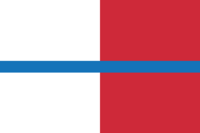Lorzepk
This article is incomplete because it is pending further input from participants, or it is a work-in-progress by one author. Please comment on this article's talk page to share your input, comments and questions. Note: To contribute to this article, you may need to seek help from the author(s) of this page. |
Republic of Lorzepk Repóblika Łorzepkská, Republika Ľořepkská | |
|---|---|
|
Flag | |
| Motto: "Hlavy Dvoě, ví víjce než Jedna Hlava" "Glavy Dvoje, ví víjce než Jedna Glava" "Two Heads, know more than One Head" | |
| Anthem: "Two nations of one country" | |
| Status | Independent state
|
| Capital and | Lorzcity |
| Official languages | Lower Lorzepk, Upper Lorzepk |
| Ethnic groups (1613) | 63.4% Lower Lorzepkans (Human) 36.3% Upper Lorzepkans (Human) 0.3% Other |
| Government | |
| Mákso Edwart Šweda | |
| Jaroňief Džustyn Ryba | |
| Area | |
• | 439,000 km2 (169,000 sq mi) |
| Population | |
• 1613 estimate | 2,2 million |
• 1613 census | 2,2 million |
• Density | 5/km2 (12.9/sq mi) |
Lorzepk (Lower Lorzepk: Łorzepk, Upper Lorzepk: Ľořepk), officialy known as Republic of Lorzepk (Lower Lorzepk language: Repóblika Łorzepkská, Upper Lorzepk language: Republika Ľořepkská), is a nation located in south-west Pythia. It is bordered by Polslava to the west. It covers areas of roughly 439,000 km2 with population of roughly 2,2 million, making it have one of the lowest population sensities at 5 people per square km. Lorzepk is culturaly divided into 3 areas; Lower Lorzepk, Upper Lorzepk and magic-using Old Lorzepk.
Etymology
Lorzepk originates from two root words, Lorz (Łorz/Ľoř) comes from old legend of Grandfather Lorz, which in the legend founded Lorzepk, and -epk comes from suffix meaning "land". Lorzepk can also be translated like "Land of the Lorz (people)".
History
Nomadic era
Golden era of the Old Lorzepk
Arrival of the off-worlders
Lorzepkan Civil War
Post Civil War
Geography and climate
Demographics
Lorzepk has population of 2,2 million, with around 5 people per square kilometer. Over 63.4% of Lorzepkans identify as Lower Lorzepkan, 36.3% identify as Upper Lorzepkan. Remaining 0.3% identify as foreigners or neither of the previous options. There is also unknown number of Magical Girls in the Old Lorzepk area, estimates say of above 10% of Old Lorzepk are Magical Girls.
